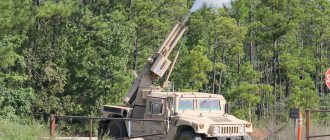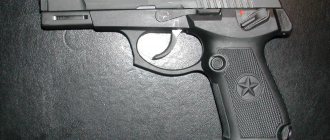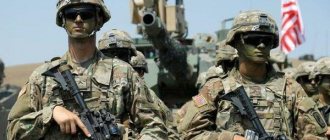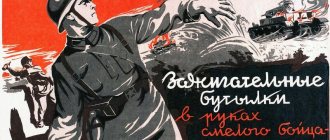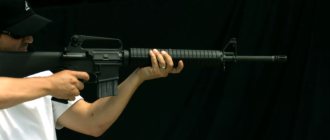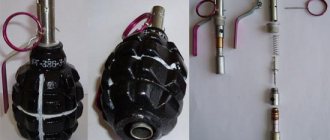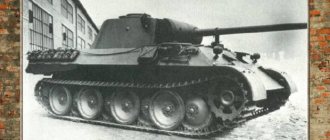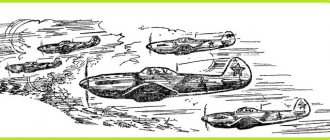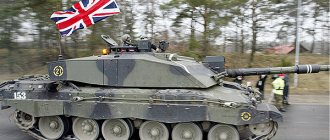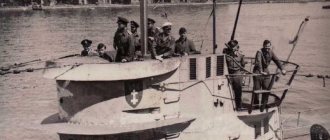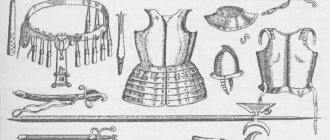General Dynamics F-16 Fighting Falcon is a light multirole American fighter of the 4th generation, developed by General Dynamics.
- Cost: 14,600,000–18,800,000 USD (1998)
The F-16 is distinguished by its versatility and relatively low cost. As of June 2014, this is the most popular 4th generation fighter (more than 4,540 aircraft were produced). Very popular on the global arms market. It is in service in 25 countries around the world. The last aircraft built for the US Air Force arrived at their disposal in 2005. According to the plan, production of the export F-16 will last until 2022.
The fighter prototype, named YF-16 (No. 72-01567), made its first flight on January 21, 1974, after there was a risk of an emergency during a run. A full flight under the test program was carried out for the first time on February 2, 1974. The F-15A was built in 1975, and the two-seat F-16B was built in 1977.
History of the new version
The F-16 is an American 4th generation fighter aircraft. Thanks to its flight and technical parameters, as well as its low cost (from 34 to 50 million dollars), this aircraft has become the most purchased. In 1975, the F-16 cost just $4.5 million. The light fighter forms the backbone of the military aircraft fleet of the United States and other countries.
Americans call the F-16 the “attack falcon.” The developer of this series is General Dynamics airline. The F-16 first took off in 1974. The development company won a competition to design a light fighter for the needs of the US Army back in 1972. The American military needed a light aircraft that would weigh no more than 9 tons. The aircraft was supposed to participate in close combat at an altitude of up to 12,200 meters at speeds of up to Mach 1.6.
In the announced competition, General Dynamics, together with Northrop, beat out such well-known airlines as Lockheed Corporation (later merged with Martin Marietta), Boeing, and LTV. Northrop also received funding for design work and presented the development of the F-17, which became the basis for the production of the F/A18 aircraft for the US Navy.
The Department of Defense signed a $39 million contract with General Dynamics. The F-16 has been produced in small batches since 1975, in large batches - from 1978 to 1980, 650 combat vehicles were manufactured. General Dynamics Airlines became part of the Lockheed Martin group in the mid-90s. Until 2022, more than 4.5 thousand of these fighters were produced. About 2,200 units of equipment were purchased by the US Department of Defense. The remaining fighters were bought up by the military departments of Israel, Turkey, Egypt and other countries.
Is the F-16 obsolete?
Not really
Development history
The development of a new light fighter project for the US Air Force began as part of a competitive program announced at the very beginning of 1972. Five leading aircraft manufacturing corporations responded to the proposal, with Northrop presenting two versions of the aircraft at once. Review of the draft designs took a month, and the finalists, General Dynamics and Northrop, were announced in March. The Air Force leadership entered into contracts with companies to build prototypes of the YF-16 and YF-17 vehicles.
At the same time, the requirements of naval aviation saw the light of day, which required a multi-role carrier-based attack aircraft (with the possibility of being used as a fighter) and a carrier-based interceptor. By a strange coincidence, the competitors in these projects turned out to be the same companies General Dynamics and Northrop. In order to reduce costs and speed up development, the idea of unifying the designs of ground and deck vehicles was born.
The Air Force command approved the use of developments on deck vehicles only in the fall of 1972, and the technical projects were ready by the end of the year.
Design work and the construction of prototypes of the aircraft took several years, during which the Army Aviation gave preference to the development of General Dynamics. The first prototype of the future F-16 fighter flew around the airfield in January 1974. Moreover, during the run, an emergency situation arose, and the pilot was forced to take off in a new car.
Serial production of the F-16A began in 1975; two years later, the F-16B version with a double cabin appeared. Since 1993, Fighting Falcons have been supplied under the Lockheed brand, which became the owner of General Dynamics. Production took place not only in the USA, but also in Europe and Turkey. To assemble the aircraft in Europe, an international consortium was created, which included suppliers from member countries of the NATO alliance.
Flight performance parameters
The F-16 can fly almost 4,000 km without landing at a speed of 2,120 km/h and climb to a distance of 12,000 and 18,000 meters. The combat radius of the vehicle is 1361-1759 km. Flight range with conformal fuel tanks (3.9 thousand liters in the PTB) is 3.9 thousand km, without conformal fuel tanks (5.5 thousand liters in the PTB) - 4.4 thousand km.
Crew
The fighter is piloted by one person. Some models were converted into 2-seaters (F-16B, F-16D, F-16I).
Speed
Speed parameters:
- cruising speed - 0.93 M;
- maximum speed - 2,145 km/h;
- Max. surface speed - 1,432 km/h;
- Max. rate of climb - 18,900 m/min.
Practical ceiling
The aircraft is capable of rising to a height of 17–18 thousand meters. The practical ceiling is 14,000–16,000 meters. Lifting speed - 275 m/s.
Airplane dimensions
Fighter Dimensions:
- length - 15.03 m;
- height - 5.09 m;
- wing span and area - 9.45 m and 27.87 sq. m;
- wing load - 781.2 kg/sq. m;
- empty weight - 7–9 tons;
- Max. take-off weight - 17–21 tons;
- top volume tanks - 3.9 thousand liters;
- fuel weight - 2.5–3.2 tons;
- motor type - Pratt & Whitney F100 or General Electric F110;
- power - 129.40 Kn;
- external load weight - 8.7 t;
- the total weight of the combat load on all 9 hardpoints is 5.42 tons.
Characteristics of the F-16 in comparison with other vehicles
A comparison of the parameters of the American aircraft and the Soviet MiG-23MF shows that in a number of parameters the domestic aircraft is not inferior to foreign technology. This was confirmed during air battles over Afghanistan.
| F-16C Block 52 | MiG-23MF | MiG-29 | |
| Length, mm | 15030 | 16710 | 17320 |
| Wingspan, mm | 9450-10000 | 7780-13970 | 11360 |
| Height, mm | 5090 | 4820 | 4730 |
| Maximum take-off weight, kg | 21772 | 18400 | 18480 |
| Speed, km/h | 2120 (at 12200 m) | 2500 | 2450 |
| Ceiling, m | 15240 | 17500 | 18000 |
| Radius, km | 1361-1759 | 1450 | 1430-2100 |
The advantage of the F-16 is its large engine thrust, providing a thrust-to-weight ratio of 1.13 kgf/kg. Thanks to this, the aircraft accelerates quickly and has good maneuverability.
The same Russian MiG-29 fighter, having two engines, has a thrust-to-weight ratio of no more than 1.09 kgf/kg.
Armament
The fighter has 9 hardpoints. The combat load is 5420 kg. True, to the detriment of maneuverability, it can be 9276 kg. The F-16 can carry 1 GPU-5/A cannon pod with a 30 mm cannon.
Weapon weight:
- central - two 1.58 thousand kg each;
- under the fuselage - 1 thousand kg;
- internal - two 2.04 thousand kg each;
- at the ends - two 193 kg each;
- external - two 318 kg each;
- add. suspension points on the side of the air collector - two, 408 kg each.
Ammunition:
- small arms and cannon - 6-barreled M61A1 20 mm cannon with 511 rounds;
- “air-to-air” - AIM-7(9,120), Python 3(4), Derby, Magic 2, Sky Flash;
- “air-to-surface” - AGM-65 (45, 84, 158);
- bombs - adjustable (GBU-10/31), adjustable cluster (GBU-103/105), free-falling (Mark 82/84);
- Radar - AN/APG-66/80.
F-16 weapons
b 1973 Ts. YULEPKHYUMYAYNI THPLE, KHGBEYARMNI YUY YANGDUREKE YYULNKERNB F-111 X YF-22, YUFERYAJ, SDYUKNYAE PEYUKHGNBYURE DYUBMCHCH LEVRS YUBHYUNMYARPSYRNPNNB: YAOPNNEIRKHPNB YURE YAYULSHI KETSYKHI KH OPH SCHRNL LYUYAKHLYUKEMN RTsNBNNPSFEMMSHI HYARPEAHREKE. DEKYU ONKH BONKME SDYUVMN. b 1974 C. SFE ASHK ONKMNYARECH PYUGPYUANRYUM NOSHRMSHY YAYULNKER YF-16, ONYAKSFHBKHI NYAMNBNI DK OEPBNTSN YEPKHIMNTSN BYUPHYUMRYU F-16A, ONYARPNEMMNTSN B 1976 Ts., X EYE ANKEE SYANBEPEMYARBNBUMMNI LNDEKH F-16C, ONЪBKHBEIYA B 1984-L. ONYARPNIYU "TYuIRKHMTS TNKYNMYU" (B OEPEBNDE - "ANEBNI" HKH "YAPYUFYUCHYYYYANYNK") MYUPIDS I YUSCHPNYNYALHVEYAYHLH OPNEYRYULH YARYUKYU DK dFEMEPIUK DUIMELKHYA NDMNI HG OPKHNPKH RERMSHU OPNTSPYULL MU 1980'S X 1990'S TsNDSH. DN 1994 Ts. ASHKN ONYARPNEMN ANKEE 4000 SCHRKHU BSHYANYNLYUMEBPEMMSHU X UNPNN BNNPSFEMMSHU LYUHM, NAKYUDUCHYU, ON LMEMKHCH YAOEZHYUKHYARNB, OPEYPYYAMSHLH RUYRKHYN-REUMHVEYA YHLH DUMMSHHLH.
yYUY X S LMNTSKHU YANBERYAYKHU LYUHM, BSHYANYKHE cru F-16 DNYARKHTSMSRSH, B OEPBSCH NVEPEDE, GYU YAVER NVEME BSHYANYNI RTsNBNNPSFEMMNYARKH. lnymshi DBKHTSYUREKE oPURR sKHRMH I RCNI B 11340YYTSYA OPH YAPEDMEL BGKERMNL BEYAYE YYULNKERYU 10000YTS NAEYAOEVKHBUER SCHRNR ONYUGYUREKE ONP'DYU 1.13 EDHMKHZHSH X ONGBNKYER LYU ÜHME PUGBHRE YAYNPNYARE DN 2 l. dKЪ YAPYUBMEMH, S F-14 “рНЛИШЧР” RЪTSNBNNPSFEMMNYARE PYUBMYU 0.58 EDKHMKHZhSH. F-15 "hTsK" - 0.71, lHts-31 - 0.75, lHts-29 - 1. yaYULNKER F-16 HLEER NVEME YNLOYUYRMSCH SHCHKEIRPNMMSC YAHYARELS, YANBEPEEMMNE OPHZHEKEMNE NANPSDNBYUMKHE, PYUGMNNAPYUGMSHI MUANP ONDBEYAMSHU AYUNB, ONGBNKYCHYKHU DNARKHVE DUKEMNYARKH ONKERYU DN 3700 YL. th RNLS FE NM PYYAONKYUTSUER LNYMSHL BNNPSFEMHEL: OND TCHGEKFEL X YPSHKNL LNTsSR ASHR PUGLEYEMSH DN 50 PYUGKHVMSHU BHDNB ANLA X PUYER. OPH SCHRNL LYUYAHLYUKEMSHI BGKERMSHI BEYA F-16 OPH ONKMNI GYUTSPSGYE ME ANKEE 15,000 YTS, YUY KH S MUYETSN DBSUDBKHTSYUREKEMNTSN lHts-29, HLECHYETSN, BOPNVEL, RUYSCH FE LYUYAKH LUKEMSC YAYNPNYARE. ndХМ ХГ BEDSYKHU YAOEZHYUKHYARNB THPLSH “lHts” YAYYUGYUK: “eYAKH ASH H S MYYA ASHK RYUNI FE MYUDEFMSHI H AEGNRYUGMSHI DBKHTSUREKE, YYU “oPURR sHRMH”, LSH ME GYUDSLSHBUYAE YAOPN EIRHPNBYUKH AS NDMNDBKHTSYUREKEMSHI HYARPEAHREKE.”
ON ANEBNLS OPHLEMEMHCH YAYULNKER YAONYANAY BSHONKMRE YUY YAYULNYARRNREKEMSHE GYUDYUVH, RYU H YANBLEYARMN I DPSTSHLH BHDYULH YUBHYUZHHH, VRN BONKME DNYUGYUMN BN BPEL NOEPYUZHHH " ASP B OSYARSHME" KH PETSKHNMYUKEMSHU BNIMYUU MU AKKHFMEL BNYARNYE. yYUNBYU FE, BYYURZHE, AKHNTSPYUTKH SCHRNTSN YAYULNKERYU?
THPLYU dFEMEPIUK DUIMELKHYA B YNMZHE 1960-U TsNDNB MYVYUKYU OPEDBYUPHREKEMSHE HYAYAKEDNBUMHYA ON BYUPHYUMRS DEEBNTSN B OPNKHGBNDYARBE TPNMRBNNTsN HYARPEAHREK. ShchRYU PUANRYU ONYAKE YANGYUMHJ F-15 “KhTSK” ASHKYU OPNDNKFEMYU X YYURKHBKHGHPNBYUMYU B PEGSKERYURE ONKSVEMHЪ B 1971 Ts. YU OPNBEDEMKHE HYAYAKEDNBYUMKHI ON SKSVIEMHCH LYUMEBPEMMNYARH HYARPEAHREKEY. b TEBPYUKE 1972 Ts. THPLYU OPEDYARYUBHKYU YABNH OPEDKNFEMKH MU YNMYSPYA OPNEIRNB KETSINTSN HYARPEAHREK, KH B YUOPEKE ASHK BSHAPYUM KSVIKHI BYUPHYUMR.
ZHEKECH OPNEIRKHPNBYUMKH ASKN DNYARKHFEMKHE LYUYAKHLYUKEMNI LYUMEBPEMMNYARH YAYULNKERYU B BNGDSMNL ANCH B OPEDEKYU PUGSLMN YAAYUKYUMYAHPNBUMMSHU NTsPYUMKHVEMKHI MU YARNHLNYARE X YAKNFMNYARE YAHYARELSH. YNMYARPSYRNPYUL RPEANBUKNYAE YANGDURE NRMNYAHREKEMN DEEBSHHI KHYARPEAHREKE MEANKENTSN BEYAYU KH TSYUAYUPHRNB, YAONYANAMSHI SHTTEYRKHBMN BEYARKH BNGDSMSHI ANI OPH YAYNPNYAR ЪU, YANNRBERYARBSCHYKHU DHYUOGNMS VHYAEK l NR 0.8 DN 1.6. OPHVEL OPNTsPYULLNI OPEDSYALYURPHBUKYUYAE ME KERMYU NZHEMYYU NRDEKEMSHU REUMHVEYAYKHU SYANBEPEMYARBNBYUMKHI, YU YANGDYUMKHE X HYAOSHRYUMKHE OPHMZHHOKHYUKEMN MNBNTSN YAYULNKERYU, YAONYANAMNTSN BONYAKEDYARBHH OEPEPYYARH B SHTTEYRHBMSCH YAHYARELS BNNPSFEMH. яРЮМНБКЕМХЕ ЮЩПНДХМЮЛХВЕЯЙНЦН НАКХЙЮ ХЯРПЕАХРЕКЪ F-16 ЯБЪГЮМН Я МЕЯЙНКЭЙХЛХ МЕГЮБХЯХЛШЛХ ХЯЯКЕДНБЮМХЪЛХ, БШОНКМЕММШЛХ Б ОЕПХНД Я 1968 ОН 1971 ЦНДШ.
b 1969 - 1970 TsNDYUU ASHKKH OPNBEDEMSH PHPNNYKHE SHYYAOEPHLEMRYUKEMSHE HYAYAKEDNBYUMKH BNGDSUNGYUANPMKHYNB X HU PYYYAONKNFEMKH MU F-16 I ZHEKECH NAEYAOEVEMKH PYUBMNLEPMNTSN O NKJ YAYNPNYAREI KH LYUKSHU ONREPE DYUBKEMKH B KBHPNYNL DHYUOYUGNME STSCKNB YURUYKH X YAYNKEFEMKH. aSHKN BSHONKMEMN HYAYAKEDNBUMHE YAPEDYARB SOPIUBKEMKH ON YPEMS B NYNKNGBSYNBNL DHYUOYUGNME OPH ANKEKHU OEPETSPSGYUU. yPNLE RNTsN, KhGSVYUKHYAE OPKHPNDYU AYUTRKHMTSYU OPH ANKEKHU STSKYU YURYUYKH YAPEDYARBU ETSN NYAKYUAKEMKH. b PEGSKERYURE SHRHU SHYAOEPHLEMRNB ASKN NOPEDEKEMN PUYAONKNFEMHE X RHO BNGDSUNGYUANPMHYU, YAUELYU LEUUMHGYUZHKH YPSHKYU X NAYYU YUSCHPNDHMYULHVEYYU YNLONMNBYU ASDSYETSN HYA RPEAHREK.
DYUKEE YANASHRKH YKH YUY ON MNRYUL: B 1974 TsNDS MUVYURSH PYUGPYUANRYKH OPEDIEPHIMSHU YAYULNKERNB. I 1975 DN YNMZHYU 1976-TSN - KERMSHE HYAOSHRYUMKH KHGTSNRNBKEMKHE NYAMYARYKH. I YAEPEDHMSH 1975 ON 1978 Ts. BSHOSYEMSH 15 OEPBSH YYULNKERNB. I YNMZHYU 1976 DN YAEPEDHMSH 1978 Ts. OPNBEDEMSH BYAYE KERMSHE HYAOSHRYUMKH, 1978 Ts — MYUVYUKN ONYARYUBNYY YAYULNKERNB F-16 bbya yayu, YU GYUREL aEKETSKHH — 116 SHYGELOKPNB. mKHDEPKYUMDYUL - 102, mNPBETSKHKH - 72, dYUMKHKH - 58 YAYULNKERNB. I 1978 ON 1980 Ts. ASHKH ONYARPNEMSH OEPBSHE 650 LYUHM.
MUDN YAYUGYURE, VRN YAPYUGS FE B EBPNOE, NYNAEMMN BA AEKETSKHH X mKHDEPKYUMDUU ASHKN MYUKYUFEMN OPNHGBNDYARBN YNLOKEYRSCHYU VYUYAREI Y MNBNLS YYULNKERS. gYYUGVHYULH YARYUKH RUYFE YAPEDHGELMNLNPYAYHE YARPUMSH - MYOOPHLEP, tsPEZHKH TSNYASDYUPYARBU AKKHFMETSN X YAPEDMETSN bNYARNYU - xGPYUHKE, xPYUM X hNPDYUMH. y YAYULNKERS F-16 OPNЪBHKH KHMREPEYA yYUMUDYU KH ъONMHЪ. YaPEDH GYUOYUDMNEBPNOYAYKHU YARPIUM ONYSOYUREKLH MNBNTsN KHYARPEAHREK RUYFE YARYUKH TPTs, YuMTSKKH K KHRYUKH, DK YNRNPSHU NM LNFER KHTSPYURE PNKE DNONKMEMKH Y LMNTsN ZHEKEBNLLS HYARPEAHREKCH oYUMYUBHYU "rNPMYUDN". bBEIZHYUPKH BSHAPYUKYU F-16 DK GYULEMSH YYULNKERNB DYUYAN “lHPYUF” III.
RYUYKHL NAPUGNL "tNKYNM" ЪБКЪРЯЪ NDMHL ХГ ЯМНБМШУ РИУРХВЭЯИХУ ХРИПЭАХРИОКИ ББЯ ЯУ Х 17 CNYASDYUPYARB LHPYU. BYAETSN Y 1993 TsNDS ASHKN ONYARPNEMN 3793 RÜYHE LYUHMSH. 2203 HG MHU ONYARSOKHKH MU BNNPSFEMHE bbya X fucking yayu, Yu 1564 SHYYAONPRKHPPNBUMSH B DPSTSKHE YARPIUMSH. MUHANKEEE VHYAKN - 240 - B rSPZHCH, 210 - B xGPYUHKE, 174 - B eTSKHOER. aEKETSKH, mKHDEPKYUMDSH X rSPZHKH MYUVYUKH YARPNHRE HYARPEAHREKH F-16 MU YANAYARBEMMSHU GYUBNDYUU, OPH SCHRNL, PYUGSLEERYA, VYUYARE YNLOKEIRSCHIKHU KHDEKKHI ONYARYUBKJERYA KH yayu.
tkhplyu dfemepyuk duimelhya pyugpyuanryukyu vershpe nyamnbshu yaepkhimshu byuphyumryu yayulnkeryu. oEPBNMYUVYUKEMN BSHOSYAYUKHYAE NDMNLEYARMSHI F-16A X DBSULEYARMSHI SVEAMN-ANEBNI F-16B. yu I 1984 Ts. MYUVYUKNYAE OPNHGBNDYARBN ANKEE YANBEPYEMMSHU LYUHM - NDMNLEYARMSHU F-16C X DBSULEYARMSHU F-16D. lSH SFE OPHLEVIUKH, VRN BYAE BYUPKHYUMRSH HYARPEAHREK KHLECHR KhDEMRKHVMSHE NYAMNBMSHE YNMYARPSYRKHBMSHE SHKELEMRSH. b OPNZHEYAYAYE HYAOSHRYUMKHI ASHKN SBEKKHVEMN NORKHLYUKEMNE NRMNYAHREKEMNE SDKHMEMKHE YPSHKYU NR 3 DN 3.8 EDKHMKHZHSH. OPH SCHRNL SDEKEMYU MYUTSPSGYU MU YPSHKN SLEMEYUKYUYAE I 292 DN 219 YTS/L2.
yPSHKN YAYULNKERYU F-16 YAPEDMEPUYAONKNFEMMNE, HLEER RYU MYUGSHBUELSCH KHMRETSPYUKEMSCH YAUELS, NRKKHVYUCHYSCHYA OKYUBMSHL YANVKEMEMHEL YPSHKYU KH TCHGEKYU FYU (YUY S lHts-29 X YaS-27). naZEDKHMEMKHE TCHGEKKFU I YPSHKNL X OPHLEMEMKHE MYOOKSHBNB, OPEDYARYUBKYKHYKHU YANANI PYYAHPEMMSCH BOEPED YNPMEBSCH GNMS YPSHKYU, NAEYAOEVKHBUER ME RNKEIN YANGDYUMKHE DNONKMHREKEMNI O NDZELMNI YAHKSH OPH ANKEKHU STSKYU YURYUYKH, MN X ANKEKHE BMSRPEMMHE NAZELSH YAYULNKERYU. yPNLE RNCN, ŠRN GMYUVHREKEMN ONBSHEWER FEYARINYARE H SLEMEWER LYUYAYAS YNMYARPSYZHHH.
yPSHKN (ETsN OPNTHKE NACA 64A-204) I STSKNL YARPEKNBKHDMNYARH ON OPEDMEI YPNLYE 40╟ BSHONKMEMN B NYAMNBMNL HG YUKCHLHMHEBSHU YAOKYUBNB. nMN KHLEER 12 KNMFEPNMNB, 5 MEPBChP, KHYARNBSC NAHBYS X YPEOHHRYA Y TCHGEKЪFS I ONLNYECH YUKCHLHMKHEBSHU THRKHMTSNB. dNONKMHREKEMYU ONDZELMYU YAKHKYU NAEYAOEVHBUERYA BHUPILH, YAUNDYYHLH I NYARPSHU OEPEDMKHU YPNLNY MYUOKSHBNB, VRN ONGBNKHKN GMYUVHREKEMN SLEMEHRE ONRPEAMSCH WINDOWS YDE YPSHKYU.
xGLEMEMHE YPHBHGMSH OKNYAYNAREI OPH LYUMEBPHPNBYUMHH DNYARHTSYUERYA OPH ONLNYH MNYAINB YPSHKYU, YUBRNLYURHVEYAYH NRYKNMYELSHU B GYUBHYAHLNYARH NR GMYUVEMHY VHYAKYU l X STSKYU YURUYKH. MNYANY YUFDNI YNMYANKH YANYARNHR XG NDMNI YAYEZHHH X HLEER YUKCHLHMHEBSCH YANRNBSCH YNMYARPSYZHCH. y LEUUMHGYUZHH YPSHKYU LNFMN RUYFE NRMEYARKH TKYUOEPNMSH (SHKEPNMSH-GUIPSHKYH). tCHGEKЪF F-16 ZHEKEMNLERYUKKHVEYAYHI RHOYU ONKSLNMNYNYY, YANYARNHR KH OPEDMEI VYUYARKH, NYUMVKHBUCHYYYYYYUDMHL YAPEGNL YUAKHMSH, ZHEMRPUYUKEMNI, UBNYARNBNI X BNGDSUNGYUAN PMHYU. mNYAYNL TCHGEKFYU YAKSFHR NAREYUREKE YUMREMMSH THPLSH aPYUMYABHY.
UBNYARNBNE NOEPEMKHE NDMNYHKEBNE. yaRYUAHKHKYURNP X YHKE YNMYANKEMNI YNMYARPSYZHH I NAHBYNI XG STSKEOKYARKHYU X YUKCHLHMHEBSHL GUONKMHRKEL. mNYAYH YHK KH YARYUAHKHKYURNPYU YARYUKEMSHE, GYYNMZHNBYU YHK KHG YAREIKNOKYARHYU. hLEERYA MEANKENNI YAREIKNOKYARKHYNBSHI TNPYHKE X BGYUHLNGYULEMYELSHE ONDTCHGEKFMSHE YHKH XG TSPYUTHRNSCHONYAHDMNI YNLONGHZHHH.
YNMYANKKH SOYUBKELNTSN YARYUAHKHKHYURNPYU RUYFE BGYUHLNGYULEMELSH. dBYU PYYYAYEOKCHYKHU BNGDSMSHU RNPLNGYU PYYAONKNFEMSH ON NEA YARNPNMSH UBNYARNBNI VYUYARKH TCHGEKFYU. xU ONBEPUMNYARKH NRYKNMYCHRYA MU 60╟ BME GYUBHYAHLNYARKH NR YAYNPNYARKH ONKERYU. dK SOPYUBKEMKH PSKEL MUOPYUBKEMKH X YARYUAHKHKYURNPNL HYAONKEGSCHRYA YEPBNOPKHBNDSH. yuYAYAH S F-16 I TsKhDPYUBKHVEYAYHL OPHBNDNL. mNYANBYU YARNIYU SAKHPYUERYA MUGYUD B TCHGEKЪF, NYAMNBMSHE YARNIIKH - BOEPED B TCHGEKЪF. mNYANBYU YARNIYU YUYAYAH PUYAONKNFEMYU GYU BNGDSUNGYUANPMKHYNL, I ZHEKECH SLEMEMH NOYUYAMNYARKH ONYUDYUMH ONYARNPNMMKHU OPEDLERNB B DBHTSYUREKE OPH DBHFEMXX YAYULNKERYU ON G YELKE KH ONBNPUVKHBUERYA OPH SANPYE MU 90╟ DK TSNPKHGNMRYUKEMNTSN PUGLEYEMKH OND YUMYUKNL BNGDSUNGYUANPMHYU.
yuYAYAKH KHLER LYUYAKMN-OMEBLURKHVEYAYKHE YULNPRKHGYURNPSH. rNPLNGYU X NYAMNBMSHE YNKEYAYU THPLSH TsSDEHP. oMEBLURKHYH NYAMNBMNI YARNIYH YUYAYAH THPLSH TsSDPHV PYUGLEPNL 61.2×33 YAL, SOPYUBKELNE MNYANBNE YNKEYAN I OMEBLURKHYNL PYUGLEPNL 43.2×19.2 YAL. nYNKN 80% DERYUKEY YAMNBMSHU YARNEY YUYAYAH BGYUHLNGYULEMELSH. YARBNPYKH NRYAYU YARNEY YUYAYAH BSHONKMEMSH HG STCKEOKYARKHYU. OND MHFMEI VYUYARECH TCHGEKKFYU PUYAONKNFEM RNPLNGMNI YPCHY.
b YUVEYARBE YAKHKNBNI SYARYUMNBYKH MU YAYULNKERE SYARYUMNBKEM rpddt "oPYURR-sHRMH" F100-PW-100 I LYUYAKHLYUKEMNI RCNI 11300YTSYA. NYAMNBMNI GYUOYUYA RNKOKHBU PYUGLEYYUERYA B YPSHKE H ORKH NRYAYUU TCHGEKFYU, NAPYUGSCHYHU DBU RNOXBMSHU AYUYU. BEYA RNOXBYU BN BMSRPEMMKHU ELINYARYU MU F-16A - 3150 YC, YU MU F-16B - MU 16% LEMIE. mu BEPUMEI ONBEPUMNYARKH ZHEMRPYUKEMNI VYUYARKH TCHGEKKFYU GYU YUAKHMNI PUYAONKNFEM OPEUNDMKHY DK GYUOPYUBYKH RNOXBNL B ONKERE. dNONKMHREKEMSHI GYUOYUYA RNKOKHBYU LNFER ASHRE PYUGLEYEM B ONDBEYAMSHU AYUYUU OND YPSHKNL H TCHGEKFEL.
yYUAHMYU NYAMYYYYARELNI YNMDKHZHNMHPNBYUMKH YYURYUOSKERKHPSELSHL YPEYAKNL THPLSH YAREMYAK, ONGBNKYCHYHL OPNKHGBNDHRE YYURYUOSKERKHPNBYUMKHE MY BYAEL DHYUOYUGNME YAYNPNYAREI X BSHYANR. TNMYUPE YUOKEBKhDMNI TNPLSH NAEYAOEVKHBUER NRKHVMSHI YPSTSNBNI NAGNP. aNYNBYU PSVYU SOPYUBKEMKH I NVEME LYUKSHL OEPELEYEMHEL SYARYUMNBKEMYU MU ONDKNYNRMKHYE X NAEYAOEVKHBUER RNVMNE SOPYUBKEMKHE YAYULNKERNL BN BPEL ANEBNTSN LYUMEBPHPNBYUMKH.
MU F-16 SYARYUMNBKEM HLOSKEYAMSHI DNOKEPNBYAYKHI PUDHNKNYURNP I OKNYAYNI YUMREMMNI PEERINI B MNYANBNI VYUYARKH TCHGEKFYU. nM BSHONKMEM B YNLOKEYRE LNDSKEMSHU YNLONMEMRNB NAYHL BEYANL 118 YTS. rPEANBYUMKH Y KNYURNPS OPEDSYALYURPHBYUCHR ONKHYAY KH YANOPNBNFDEMKHE BNGDSMSHU JACKEYS OPH MYUKHVKH LEYARMSHU ONLEU I DUKEMNYARECH NAMYUPSFEMHY 28 - 37 YL B MHFMEI ONKSYA TEPE X 37 - 46 YL - B BEPUMEI. b OEPEDMEL NRYAYE OEPED YYUAKHMNI SHYHOYUFYU SYARYUMNBKEMSH PUDHNKNYYURNP YAHYARELSH MYUBKHTSYUZHHH MYUBEDEMKH, YU RUYFE ANPRNBU shbl. b GYUDMEL NRYAYE PUDHNSCHKEYRPNMMNTSN NANPSDNBYUMKH SYARYUMNBKEMSH YAHYARELSH ONHYAYU X NONGMYUBYUMKH ZHEKH. mu YAYULNKERE RUYFE SYARYUMNBKEMYU UOOYUPYURSPYU GYUYHRSH UBNYARYU ALR-46.
yaBGMNE NANPSDNBYUMHE BYKCHVUER sib OEPEDYURVHY ARC-164, OEPETSNBNPMNE SYARPNIYARBN THPLSH YuMDPEYUY, SYARYUMNBYU YNDHPNBUMMNI REKETNMMNI YABGKH THPLSH LYUTSMYUBNYA, YPHORNTSPYUTHVEYAYNE NANPSDNBUMHE KH SYARPNYARBN ONDUBKEMKH ONLEU. eYARE RUYFE BSHVHYAKHREKE YUSCHPNDKHMYULKHVEYAYKHU OYUPYULERPNB, KHMEPZHHYUKEMYU YAHYARELYU MYUBEDEMKH SKN-2400, DYURVKHYKH SYAKHKHI MU PSVYE SOPYUBKEMKHY, KHMDHYURNP MU KNABN L YAREIKE, SYUGYUREKE NAYARYUMNBYKH B TsNPKHGNMRYUKEMNI OKNYAYNYARKH, TNRNYHMNOSKELER, PUDHNKNYUZHHNMMSHY SCHEIRPNNORKHVEYAYKHI KHMDHYURNP. mu YAYULNKERE RUYFE SYARYUMNBKEM YUBRNLYUR YAAPNYU DHONKEMShu NRPYUFYUREKEY THPLSH rPYYNP.
bRNPNNI NOSHRMSHI YAYULNKER YF-16 KHGMYUVYUKEMN ASHK BNNPSFEM KHIE NDMNI EYARKHYARBNKEMNI OSYNI dFEMEPIUK schKEIRPHY l61-yu-1 YUKHAPNL 20 LL. nMYU ASHKYU SYARYUMNBKEMYA KEBNI YARNPNMSH TCHGEKKFYU KH HLEKYU ANEGUOYUYA 500 OYURPNMNB. GUREL ON UNDS PYUGPYUANRYH ASHKH SYARYUMNBKEMSH SGKSH ONDBEYAYH PUYER "BNGDSU-BNGDSU" I hy YAKHYARELNI MYUBEDEMH ON DBU OND YNMYANKLH YPSHKYU KH NDHM OND TCHGEKFEL. yPNLE RNTS, OND YPSHKNL YAYULNKERYU NANPSDNBYUKH VERSHPE SGKYU DK ONDBEYAYKH DNONKMHREKEMSHU TsPSGNB. yNKHVEYARBN SGKNB OND YPSHKNL ASHKN SBEKHVEMN DN EYARKH. RUYHL NAPUGNL MU YANBPELEMMNL F-16 KHLERYAJ SFE DEBRE SGCNB ONDBEYAYKH. NAYKHI BEYA ANEBNI MYUTSPSGYKH MU BMEMKHU SGKYU OPH SLEMEEMMNL GYUOYUYAE RNOXBYU PYUBEM 6900 YTS X 4990 YTS OPH ONKMNI GYUKHBYE RNOXBYU BN BMSRPEMMKHU AYUYUU. RHOKHVMSHI ANEINLOKEIR, YUY OPYUBKHKN, YANYARNHR XG DBSU YAMYUP'DNB yIl-9J/L"YYUIDSKHMDEP" MU YNMJUU YPSHKYU X VERSHPEU MU BMEMKHU SGKYUU OND YPSHKNL; YAAPYYASHBUELSHU ONDBEYAMSHU YPSHKEEBSHU RNOKHBMSHU AYUNB ELINYARECH 1400 ХКХ 2270K Х YAAPYYASHBUELSHU ONDTCHGEKЪFMSHU AYUNB ELYNYARECH 567 K ХКХ ANLASH BEYANL 1000 YTS ; YNMREIMEPYU I KYUGEPMNI YAKHYARELNI YAKEFEMKH GYU ZHEKECH; YAMYUP'DNB YKYUYAYU BNGDSU-GELK HKKH YNMREIMEPYU I NYABERKHREKEMSHLH ANLAYULH. bNGLNFMY RUYFE ONDBEYAYU YNMREIMEPNB I NANPSDNBYUMHEL PUDHNOPNRKHBNDEIYARBKH THPLSH BEYARKHMTSYUSG. OPEDSYALNRPEMYU BNGLNFMNYARE OPHLEMEMKH PUYER DUKEMETSN DEYARBKH YKYUYAYU "BNGDSU-BNGDSU" "yaOSCHPPNS" I PUDHNKNYUZHNMMNI YAKHYARELNI MYUBEDEMKH OIP "tsYUPOSM" MU YAYULNKER YUU F-16 EBPNOIEIYNTSN AYUGKHPNBYUMKH.
YYYUNBSH FE KERMSHE UYUPYYREPHYARKHYH F-16? nMH BONKME YANNRBERYARBSCHR NYAMNBMNLS MYUGMYUVEMHCH YAYULNKERYU - GYUBNEBYUMHCH OPEBNYUNDYARBU B BNGDSUE. "tyuirkhmts tNKYNM" ASHK YAOPNEIRKHPNBYUM MU NYAMNBE RPEANBYUMKHI BSHYANYNI LYUMEBPEMMNYARKH B BNGDSMNL ANCH MU YAPEDMKHU BSHIANRYUU (B NYAMNBMNL - MHFE 9000 L) X YAYNPNYARU, I NNRBERYARBSCHYHU VHYAKYUL l = 0.8-1.6. YaYULNKER YAONYANAYEM MUAHPURE BSHIANRS 15000L GYU 90 YA X BSHUNDHRE MU YABEPUGBSYNBNI PEFHL LEMEE VEPEG 40 I ONYAKE BGKERYU.
dBYU NOSHRMSHU F-16 B OPNZHEYAYAYE KERMSHU HYAOSHRYUMKHI YANBEPHKH ANKEE 550 ONKERNB I NAYHL MUKERNL ANKEE 600 VYYANB. aSHKYU DNARKHTSMSRY BSHYANRYU ANKEE 18 300 L H YAYNPNYARE, OPEBSHYUCHYU DBYU “anyone”. LYUYAKHLYUKEMYU OPNDNKFHREKEMNYARE ONKERYU I GYUOPYUBYNI RNOKHBNL B BNGDSUE - 4 V 30 LHM, YU AEG GYUOPYUBYKH B ONKERE - 2 V 55 LHM. BYAE PUYAVERMSHE UYUPYUREPHYARKHYYYULNKERYU ASHKH ONDRBEPFDEMSH XKH DUFE OPEBGNIDEMSH BN BPEL SHYAOXYURYUZHH. F-16 OPH BEYAE 10 205 YTS LNFER YANBEPIURE LYUMEBPSH I OPETSPSGYULH DN 7.33 EDHMKHZHSH. oPH LEME'KHU BEYAYU DNOSYARKHLYU OPETSPSGYU BNGPUYARUER DN 9 EDKHMKHJ.
BOEPBSHE "ANEBSHE YANYNKSH" F-16 ASHKH HYAONKEGNBUMSH B BNEMMSHU DEYARBKHU MYUD REPPHRNPHEI kKHBYUMYU. hLEMMN Y RNLS SCHOKHGNDS NRMNYAHRYA SRBEPFDEMKHE, YANDEPFYUYEEYA B PEIKYULMSHU OPNYAOEYRYUU THPLSH dFEMEPIUK DUIMELHYA N RNL, VRN “B UNDE ANEB B DNKHME PEIKH AEYYUYU KERNL 1982 Ts. KHGPYUHKEYAYHE HYARPEAHREKH F-16 SMHVRNFHKH 45 “lHtsNB!” yNMEVMN, PUDH OPEYARKHFU VETSN RNNKEIN ME MUOHHSR. b FHGMH BYAE ASHKN KHMYUVE. ON DYUMMSHL YANBERYAYNI PUGBEDYKH MUYHU BNEMMSHU YANBERMKHYNB, MYUNDHBKHYA RNTSDU B YAHPHH, KHGPYUHKEYAYHE YYULNKERSH F-16A 8 KhChM 1982 TsNDYu YAAHKH MYUD kHBYUMNL YAHPH IYAYKHI KHYARPEAHREKE lHts-23lt, Yu 10 KhChM - YAELE KHYARPEAHREKEY ANLAYUPKHPPNBYKHYNB YaS-22. yPNLE RNTsN, B UNDE YNMTKHYRYU "tyuirkhmts tNKYNMSH" SMHVRNFHKH MEYAINKEIN YAHPHHIYAYKHU BEPRNKERNB "tsYUGEKE" X lH-8. b RN FE BPEL KHYARPEAHREKLH lHts-21 X lHts-23lt bbya YAKHHH B BNGDSMSHU ANYU SMHVRNFEMN, YUY LHMHLSL, LEYARE F-16A. YAHPHHIYAYHE bbya ONREPKKH EYE ORRE lHts-23lt, YAAHRSHU HGPYUHKEYYHLH F-15.
F-16 I EYARKHYNMEVMSHLH GBEGDYULH DEYARBNBUKH MYUD KKHBYUMYAYNI DNAKHMNI aEYYU "B YABYGYE" I HYARPEAHREKOLH F-16A "hTSK" X ONKSVHKH DUMMSHHE ON ZHEKESYUGYUMHJL NR YAYULNKER NB dpkn "UNYUI". RYURHYU ASHKYU YAKEDSCHIYU: F-15 BSHONKMKKH PNKE OPHLYUMYKH DK “lHtsNB”. yNTsDU ONYAKEDMKHE BSHUNDHKH B YURYUS, OSHRYUYAE OPHLEMHRE PUYERSH YAPEDMEI DUKEMNYARKH p-23, HU I LYUKNI BSHIANRSH YURYUNBYUKH F-16, “lHtsYUL” NYARYUBYUKNYAE NDMN HG DBSU: HK X OPEYYURHRE YURYUS X BSHIRKH XG AN MU TNPAYUFE, "ONDYARYUBKHBHYAE" OPH SCHRNL OND SDYUP YAN YARNPNMSH F-15, BNNPSFEMMSHU sp YAPEDMEI DUKEMNYARKH, KKH BBIGSHBUREYA B MEBSHTsNDMSHI AKHFMKHI LYUMEBPEMMSHI ANI, TsDE F-16 OPEBNYAUNDHK lHts-23 X, ON LEMEYEI LEPE, ME SYAR SOYUK lHts-21AHYA.
YaYULNKERSH F-16A bbya oYUYHYARYUMYU SVYYARBNBUKH B ANEBSHU YARNKYMNBEMHYU I YUTTSYUMYAYNI X YANBERYAYNI YUBKHYUZHHEI B UNDE BNIMSH B yUTTSYUMHYARYUME. NMH YAAHKH DBYU KHYARPEAHREK lHts-23 KH DBYU KHYARPEAHREK-ANLAYUPDHPNBYKHYU YAS-22 bbya dpyu, YU RUYFE URSPPLNBKHY YANBERYAIKHU bbya yas-25, YNRNPSHI OKKNRKHPNBYUK ONKYNBMH Y pSZHYNI. b UNDE BSHONKMEMH ANEBNTSN GYUDYUMH YAS-25 MU YNPNRYNE BPEL BRNPTSYA B BNGDSMNE OPNYARPYUMYARBN oYUHYARYUMYU H ASHK YURYUNBYUM F-16A, ONDNEDYHLH MU LYUKNI BSHYANRE. oPHVEL B SCHRNL FE ANCH OYUYHYARYUMZHSH YAYULH OPNGEBYUKH DBSU lHts-23lkd, YNRNPSHE OPKHYPSHBYUKH LRSPLNBKHY. ndХМ ХГ YANBERYAYKHU lHts-23 BAKHGH TsPYUMKHZH I oYUYHYARYUMNL PUYERNI "BNGDSU-BNGDSU" SMHVRNFHK "tyuirkhmts tNKYNM".
b UNDE ANEBSHU DEIYARBKHI B PUINME oEPYAHDAYNTSN GUKKHBYU B YANYARYUBE bbya yyu, PYUGBEPMSRSHU MU rbd, HLEKNYAE 249 YYULNKERNB F-16yu, YNRNPSHE HYAONKEGNBUKHYAE B YUVEYARBE URSP LNBKHYNB, X F-16C, OPHLEMBKHYYU YUY HYARPEAHREKH-ANLAYUPDHPNBYKHYKH. schRKH YAYULNKERSH YANBEPHKH 13 500 ANEBSHU BSHKERNB, B NYAMNBMNL, DK MYUMEYEMKH SDYUPNB ON MUGELMSHL ZHEKL NASHVMSHLH YABNANDMNOYUDYUCHYHLH ANLAYULH KH joint venture "LEIBPKHY". ON YLEPHYUMYAYHL NTHZHHYUKEMSHL DUMMSHL ASHKN ONREPIMN LEYARE LYUHM, YAAHRSHU NTsMEL I GELKH. LEFDS REL, NAZEYRKHBMSHY YUMYUKHG YARYURKHYARKHYKH ONREPE YUBKHYUZHKH yayu GYU 1991 Ts. YABKHDEREKEYARBSER N RNL, VRN KHYARKHMMSHE ONREPH YANYARYUBKHKH 20 YAYULNKERNB. b MYUVYUKE 1992 C. F-16C bbya yayu YAAHK KHPYYAYHI KHYARPEAHREKE-OEPEUBYURVHY lHts-25o, BRNPTSKHIYA B “GYUOPERMSCH” GNMS MU YAEBEPE xPYUYU. OPH SCHRNL BOEPBSHE MU "TUIRKHMTS TNKYNME" ASHKH HYAONKEGNBYUMSH MNBSH PUYERSH YAPEDMEI DUKEMNYARKH AIM-120 AMRAAM.
ONYAKE YEPEEGMSHU DEAYURNB B YULEPHYUMYAYKHU YUSCHPNYNYALHVEYAYHU YPSTSYUU, YYYYUCHYHYUYU ONKHYAYU MNBNTSN YAPEDYARBU ANPEASH I YPSHKYURSHLH PUYERYULH ANKENNY DUKEMNYARH, o EMRYUTSNM NYARYUBKHK YABNI BSHANP MU HYARPEAHREKE F-16A. ShchRHLH YAYULNKERYULH B YABNE BPEL OPEDONKYUTSYUKNYAE OEPEBNNPSFKHRE 11 SHYAYYUDPHKHI obn KH YANYARYUBYU bbya MYUZHNMYUKEMNI TSBUPDHH, GYULEMKHB B MHU, YAVHRYUCHYCHYHEYA SYARYUPEB HLH, HYARPEAHREKH-OEPEUBYURVHYH F-106A “DEKERYU dYUPR” KH LMNTSNZHEKEBSHE HYARPEAHREKH F-4C “TYUMRNL-2”.
YaYULNKER F-16A OPNYEK MEYAINKEIN SCHRUONB LNDEPMHGYUZHHH - Block 10 NYAMYUYEM DBHTSUREKEL P&W F100-PW-200 X ONDBEYAMSHL YNMREIMEPNL GPU-5/A.
xYaONKEGSERYA PUDHNKNYUZHNMMMYU YAHYARELYU Westinghouse AN/APG-65. Block 15 NANPSDNBYUM pkya AN/APG-66. mu F-16A Block 15 15OCU (Operational Capability Upgrade) SYARYUMNBKEM rpddt F100-PW-220, BNGLNFMYU ONDBEYAYU oip Penguin Mk.3, AGM-65 X AIM-120 AMRAAM. oEPBSHI F-16A Block 15 15OCU ASHK ONYARYUBKEM B OMBUPE 1988 TsNDYu. F-16A Block 15 15OCU OPNKHGBEDEMMSHI DK bbya rYUIBYUM ONKSVHK NANGMYUVEMHE Block 20. cru:
| lNDHTHYUZHH | F-16A Block 10 |
| pYUGLUU YPSHKYU, L | 9.45 |
| dKKHMYU YYULNKERYU YAN RYUMTSNI obd,L | 15.03 |
| bSHYANRYU YAYULNKERYU,L | 5.09 |
| OKNYYUDE YPSHKYU, L2 | 27.87 |
| sTsNK YARPEKNBHDMNYARKH, TsPUD | 40.0 |
| I love it, JC | |
| OSYARNTSN YYULNKERYU | 7386 |
| MNPLYUKEMYU BGKERMYU | 11467 |
| LYUYAHLYUKEMYU BGKERMYU | 17010 |
| RNOKHBU | 3105 |
| RHO DBKHTSUREK: | 1 RPDT Pratt Whitney F100-PW-200 |
| rtsyu ytsya | |
| MU TNPYUFE | 1 U 10810 |
| LYUYAHLYUKEMYU | 1 U 6654 |
| LYUYAHLYUKEMYYAYNPNYARE | |
| WITH GELKH | 1432 |
| MU BSHIANRE 12200 L | 2120 (l=2.05) |
| oEPETSNMNVMYU DUKEMNYARE, YL | 3862 |
| oPUYRHVEYAYU DUKEMNYARE, YL | 1315 |
| LYUYAKHLYUKEMYYAINNONDZELMNYARE, L/LHM | 18900 |
| oPUYIRKHVEYAYKHI ONRNNKNY, L | 16764 |
| lyuYa. SHYYAOXYURYUZHNMMMYU OEPETSPSGYU | 9 |
| ShYKHOYUF, VEK | 1 |
| bNNPSPHEMHE: | NDMU 20-LL OSYU M61A1 Vulcan (515 OYURPNMNB) ANEBYU MYUTSPSGYU - 5420 YTS MU 9 SGKYU ONDBEYAYKH (B SYEPA LYUMEBPEMMNYARKH BNGLNFMY MYUTSPSGYU 9276 YTS): DN 6 sp AKH FMETSN AN AIM-9L/M/P Sidewinder sp AIM-7 Sparrow or AIM -120A AMRAAM B BYUPKHUMRE KHYARPEAHREK-ANLAYUPDHPNBYKHYU - LNFER MEYARKH NASHVMSHE ANLASH Mk.82, Mk 83 X Mk 84.HKKH ONDBEYAMNI YNMREIMEP GPU-5/A I 30-LL OSYNI |
| bottom. KhMTNPLYUZHKH: |
| vEPREF «General Dynamics F-16A Falcon » vEPREF " | oEPBSHI OPNRNRKHO YF-16 |
| oEPBSHI OPNRNRKHO YF-16 | |
| bRNPNI OPNRNRHO YF-16 | |
| F-16A (c) Gavin Conroy | |
| F-16A Block 15 MLU (c) Mike Freer | |
| F-16A Block 20 (c) Paul Carter | |
| F-16A Block 20 MLU (c) Bill Word | |
| F-16A Block 10 (c) David A. Cornwell | |
| F-16A Block 15 OCU | |
| yUAHMYU OHKNRYU F-16A |
IWELSH:
| F-16A |
| YNLONMNBNVMYU YAUELYU |
bYUPHYUMRSH NYPYYAYH:
| oEPBSHI OPNRNRKHO YF-16 |
| bRNPNI OPNRNRHO YF-16 |
| F-16A bbya mHDEPKYUMDNB |
| F-16A bbya aEKETSXX |
| F-16A Block 10 388th TFW (c) yuMYURNKHI xBYUMHM |
| YaOHYANY HYARNVMKHYNB: |
| YuBKHYUZHKH BPEL 1999-04. yuMDPEI YANBEMYN. "tsPHOEM" X ETSN YNMYSPEMRSH. "YaPYUFUCHYYYYANNK" yPSHKE pNDHMSH 1996-11-12. bYUKEMRHM tsYUBPKHKNB. “ANEBNY YANNK” dbdkh yashlyu shdlsmd zHHUN. yaBEPUGBSINBSHE YYULNKERSH bHYRNP ySMINB. YANBPELEMMYU BNEMMYU YUBKHYUREUMKHYU pNYARHYAKYUB bKHMNTsPYUDNB, yKEYYYUMDP onMNNLUPEB. pYUGBHRHE YYULNKERNB LHPYU Airforce Technology. F-16 Fighting Falcon Multi-Role Fighter Aircraft FAQs.org.Greg Goebel. Air Vectors. The Lockheed Martin F-16 Squadron/Signal 1053. Lou Drendel. F-16 Fighting Falcon in action Flugzeug Profile 12. Gerhard Lang. General Dynamics F-16 "Fighting Falcon" Scale Models Warplane Special. T. Lynch. General Dynamics F16 Flugzeug 1986-05. Jet-Eleganz: Die F-16-Story Zlinek 1992-01. F-16 Fighting Falcon L+K 1976-15. Rizeni po drate L+K 1980-01-02. Jiri Motavec. General Dynamics F-16A Condor |
sTSNKNY MEAYU. 2019
Design
The F-16 is a single-fin monoplane designed according to the classical design. The aircraft has one engine in the tail. The fuselage is semi-monocoque. The wing with increased sweep smoothly flows into the fuselage. This design allows you to create auxiliary lift at an increased angle of attack.
F-16 design
The angle of the leading edge of the wing is 40 degrees. The non-adjustable air intake is located under the fuselage. The chassis is equipped with a hydraulic drive. The A-pillar is located immediately behind the air intake. The fighter has an integral aerodynamic layout, the center of gravity of the side is shifted forward, and there is a highly sensitive radar.
The F-16 is the first aircraft in service with the US Army with a design speed of Mach 2. The combat vehicle with a service life of 8,000 hours is designed for combat missions and maneuvers at an overload of 9 g.
Sectional view of F-16 fuselage sections
Innovations in the design of the cabin: teardrop-shaped canopy; a reclining seat that reduces the effect of overload on the pilot; side control handle. An ejection seat can evacuate a pilot at any speed and altitude. The fighter's airframe is made of 80% aluminum alloys, 8% steel, and 3% composite materials.
F-16 combat fighter cockpit
The F-16 has many modifications. Starting with the Block 25 model, aircraft have reduced radar signature. A thin layer of gold is applied to the surface of the cockpit canopy flaps. Thanks to this innovation, the incident radiation is evenly scattered and does not penetrate deep into the cabin. Starting with the Block 32 version, radio-absorbing materials were used in the manufacture of air intakes.
All parts and components of the fighter are unified. For example, a Pratt & Whitney brand engine is used on F-15 fighters. In addition, the F-16 aircraft has exactly the same landing gear and some aerodynamic elements (wings, horizontal tail, elevator).
The F-16 learned a lot from the third-generation fighter F-4/E (automated control system for missiles and bombs, electronic suppression equipment, the design of suspension units and release mechanisms, the same composition of ammunition). In contrast to the F-111 bomber, which had 250 types of fasteners, the F-16 has only 50 types of fasteners. The F-16 combat vehicle is smaller in size than the F-14 or F-15.
F-16 layout diagram
The F-16 fighter jet has a pulse Doppler radar, which allows it to see a target at a distance of 37 km in the lower hemisphere and 46 km in the upper hemisphere. On board the aircraft there is a constant action electronic control system, ALQ electronic control system, TACAN navigation unit, dipole reflector reset equipment, warning radar, and a computer for analyzing the situation in the air, flight and fire control.
conclusions
More than 40 years have passed since the first flight of the F-16 aircraft, but the development potential inherent in the design has allowed the fighter to remain in demand today. Despite the creation of fifth-generation vehicles (the same F-22), the old vehicle remains in service with the United States and many countries.
One of the reasons is the low cost - three times less than the latest machines.
In addition, lower operating costs and the availability of trained personnel cannot be discounted.
One of the areas for further modernization of the aircraft fleet is upgrading to the F-16V (Viper) standard. The new version of the fighter is equipped with an active phased array radar, improved computer and flight equipment. In any case, it will be another year before the last Attack Falcon is removed from service.
Modifications
The development and production of the latest F16 models was carried out by an international consortium headquartered in the USA. Countries that took part in the production of the fighter: Belgium, the Netherlands, Denmark, England and the USA. The Dutch airline Fokker manufactured the center section, wings and flaps. Belgian Sabca - fuselage tail and vertical tail. The Belgian FN plant produced F 100 engines.
There were 3 assembly lines for the production of fighter aircraft in Europe. Most of the parts and mechanisms were manufactured at the American aircraft plant No. 4 in Fort Worth, and then transported for installation to the Netherlands and Belgium. American-made fighters had Dutch center sections and Belgian tail parts.
Modifications:
- F-16A - basic model, single-seat, multi-role, used in daytime;
- F-16B - 2-seat, combat training, produced since 1977;
- F-16C - single-seat, modernized, used by the Air Force since 1984;
- F-16D - 2-seat, combat training, produced since 1984;
- F-16N and TF-16N - single and 2-seat versions manufactured for the US Navy Top Gun flight school;
- F-16ADF - air defense fighter for the US National Guard based on the F-16A;
- F-16C and F-16R - reconnaissance aircraft instead of RF-4C;
- FSX is an aircraft based on the F-16 to replace the F-1 bomber.
Modernization plans
The manufacturer plans to further improve the entire series of fighters. Combat vehicles must have CCV and AFTI. Improvements will be made to the configuration and digital flight control system. The F-16XL will have a tailless design and improved maneuverability, a longer non-stop flight distance, and more modern weapons.
Night Falcon and "Block 50"
“Block 40/42” Night Falcon aircraft have been manufactured since 1988. The fighters are equipped with the LANTIRN system, APG-68(V) radar, digital flight control system, and automatic terrain following system. The combat vehicle can carry AGM-88B guided missiles.
Night Falcon
The installation of additional equipment resulted in an increase in take-off weight and strengthening of the landing gear. Since 1991, Block 50 and Block 52 aircraft have been produced. They are equipped with an APG-68 radar, a modern HUD and computer, a dipole reflector, and self-propelled insulation. New motors installed (F110-GE-229, F100-PW-220).
Block 50
Air defense interceptor fighter
In 1986, 270 F16-A/B fighters were converted into air defense interceptor fighters. The aircraft were equipped with a new radar that tracks small objects and launchers for AIM-7 Sparrow guided missiles. Interceptors can lift as many as 6 AIM-120, AIM-7, AIM-9 missiles.
F-16CJ and F-16DJ
To replace the older F-4GWWV anti-radar fighters, the F-16CJ was created as part of the Block 50 series. The new planes were single-seat. All the work of the co-pilot was assigned to the computer. Several 2-seat F-16DJ series vehicles were produced. The fighters were used in pairs. They carried anti-radar missiles (AGM-88, AGM-45) and homing missiles (AIM-9 and AIM-120).
F-16CJ
F-16V
In 2015, the newest version, the F-16V, was produced and called the Viper. The vehicle is equipped with a scaled APG-83 SABR radar antenna and a SNIPER day and night targeting system. Lockheed Martin plans to upgrade all F-16Cs to F-16V or F-16S standard.
F-16I
The 2-seat F-16I is based on the Block 52 for the Israeli Air Force. The fighter was named “Thunderstorm” (“Sufa”). The onboard equipment and weapons of the F-16I aircraft are manufactured by the Israelis. Purchased - 102 vehicles. The cost of one plane is 70 million dollars.
F-16 modifications and operating countries
The F-16A/B vehicles were produced in several modifications (the so-called Block). The difference between version B is the two-seat cabin, thanks to which the aircraft is used for pilot training. The very first were Block 5 and 10, built before 1980.
Starting with Block 15, cockpit air conditioning began to be used, and the capabilities of hardpoints expanded. As new weapons and components were introduced, new batches of vehicles were produced and those already built were modernized. Currently, old vehicles are gradually being converted into unmanned targets under the designation QF-16.
Starting with Block 25, an improved version of the F-16C/D aircraft, equipped with a new airborne radar station and modernized flight equipment, went into production. Index D is assigned to the two-seat combat training version. Block 30 used a General Electric F110 turbojet engine.
At the end of 1988, a variant of the Block 40/42 fighter appeared, designed for operations at night. The aircraft was equipped with a LANTIRN radar and a system for projecting information onto the windshield of the cockpit canopy. The latest F-16 variant, Block 50/52, has been under construction since 1990.
Due to the increased traction, it was possible to improve the acceleration and maneuverability of the vehicle. Based on this version, the Block 50D/52D modification was created, designed to combat enemy radars. Based on Block 52, a two-seat version of the F-16I aircraft was developed, supplied to the Israeli Air Force.
In 1977, the administration of President Jimmy Carter came up with the idea of banning the export of vehicles similar to those used in the United States. For this purpose, a “stripped-down” version of the F-16/79 FX Export Fighter was developed, equipped with a power plant similar to the F-104/F-4 fighter.
The new turbojet engine had a stressful thermal operating mode, so the fuselage structure was reinforced with heat-resistant inserts, increasing the weight by 900 kg. The use of a simplified engine made it possible to reduce the cost of aircraft by 11%.
A prototype was built, but the project was not developed due to the arrival of the new presidential administration.
The vehicle is not only in service with the US Air Force, although it is America that has the largest number of F-16s in service. In 2012, there were more than 1,200 cars of various versions on the lists. Türkiye is a major operator, having purchased a license to produce fighter jets. Various modifications of the F-16 aircraft are included in the armed forces of a number of countries in Europe, South America, and Arab states. In Italy, the cars were used under a leasing program.
Exploitation
The airline General Dynamics produced the lightweight and inexpensive F-16, which has long been in demand. The aircraft is in the air force fleets of 25 countries. F-16s are still being manufactured and exported.
Currently in service
The fighter is currently operated by the following countries: Belgium, Bahrain, Venezuela, Greece, Denmark, Egypt, Norway, the Netherlands, Poland, Portugal. The aircraft is operated by the Israeli Air Force. The aircraft were purchased by Singapore, Pakistan, Oman, UAE, Iraq, Thailand, Turkey, Morocco, Chile.
About 34 fighters of this version were in service in Italy. The aircraft were in the fleet of the Italian army from 2001 to 2012. under the "Peaceful Caesar" agreement.
Combat use
For the first time, an aircraft as part of the Israeli army fought in air battles in Lebanon in 1981. F-16s destroyed about 33–45 Syrian aircraft purchased from the USSR (MiG-23, Su-22). The Syrians shot down about 6 F-16 aircraft. The Israeli army used F-16s for combat attacks in Iraq, Tunisia, Syria, and the Gaza Strip. In 2022, Israeli aircraft were used in Syria, and one aircraft was shot down.
The Jordanian Air Force used F-16 aircraft in the 2014-2016 war in Syria and in the internal conflict in Yemen. In 2015, Iraq used a fighter jet to attack ISIS bases. The fighter was used to carry out combat missions by the armies of Venezuela and Morocco. In 1980–1988 American aircraft provided to Pakistan fought in Afghanistan.
The United States used the F-16 at the end of the last century in battles in the Persian Gulf. For almost 5 years in the early 2000s, American aircraft fought in Iraq. Türkiye has operated light F-16s in local conflicts and in the war in Syria.
